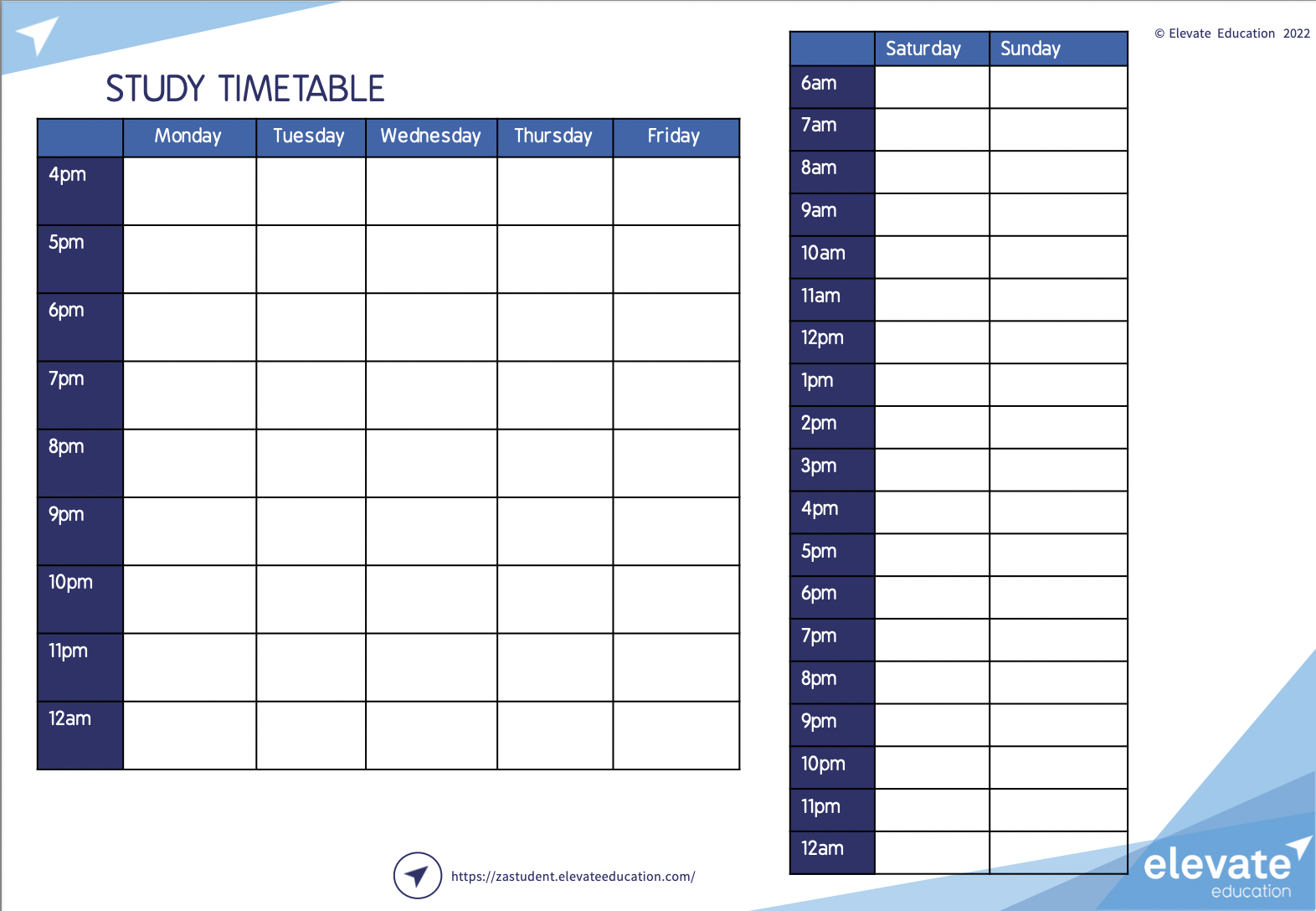"I can't learn languages"
… is a complaint (excuse!) I have heard so many times over the years! And it is true: studying for languages is a tricky business and is unlike anything else we do across the school curriculum.
Start Browsing
Start browsing
< Wait, I have a password

to your account
 Facebook
Facebook
< Wait, I don't have a profile yet
Reset Password >
to save your details
 Facebook
Facebook
< Wait, I already have a profile

Start browsing
< Wait, I have a password



One of the hardest things about being a student is not necessarily the actual work we'll be doing, but rather finding the time to DO that work. We all lead busy lives, we procrastinate, and there is always something we'd rather be watching on DSTV than doing homework. One of the best ways to make sure we've got the time to study is to create a study timetable. Before you cringe at the term, check out the 3 steps below for making a study timetable that you will actually follow.
Most people mistakenly begin making a timetable by eagerly filling it with study. This is a massive mistake. By putting in the study blocks first, students overcommit to hours that are unrealistic and that can't be followed. This often leads to students getting stressed, overwhelmed, and ultimately giving up on the entire process of using a timetable at all.
Instead, we suggest that you list all the activities that you love doing during the week and the things that you just don't want to compromise on. Then you should nominate a time that you would most likely allocate to these activities. For example, a list might look like this:
Soccer: Mondays, 6pm - 7:30pm and Sundays 2pm - 4pm
Xbox: Tuesdays and Thursdays, 7pm - 8pm, Weekends 3pm - 6pm
Socialising with mates: Weekends, 11am - 6pm DSTV: Mondays and Wednesdays, 7:30pm - 9:00pm
Social media: Daily, 5pm - 6pm
Of course, it's challenging to know in advance each activity you will do. Nobody wants to live life on such a tight schedule, but getting a rough estimation of when you do things will be a great start. Once you have identified the key times for your favourite activities, you can move to step 2.

Once you have identified all the leisure and extra-curricular activities, the next step is to put those activities into the study timetable (click on the timetable above to access a digital version).
Once you have put in all your activities, you will notice that the study timetable has many blank spaces or gaps left in it. These gaps are the times that you can study in. Rather than putting in specific tasks here, you should just nominate these time blocks for studying. If you don't have any blank spaces left over, perhaps it's worth thinking about what activities you can remove.
By reversing the process of organising a study timetable (fun stuff first, study second), we reverse the perception of a study-timetable. It is no longer a study-timetable that life has to fit around, it is a life-timetable that study fits around. This means that you're prioritising the things you love, while still leaving plenty of time to study. In turn, this means you're willing to study in those periods because you know that you are not sacrificing the things that you want to do.
Also, it's important to keep in mind that this study timetable should be used as a guide, not as a rule book. The aim is not to stick to it 100% and live life by such regimented time-slots. If you can stick to the timetable 60% of the time, that should be considered a 'win'. Sometimes you will get to a study timeslot and you will just feel like relaxing - that's fine! Equally, you may get 30 minutes into an X-box game or find that you've had enough Snapchat for the day and decide it's time to hit the books. Either way, plan in advance and stay flexible too!
It can be pretty frustrating to hear your parents say, "Are you doing enough studying?" A great way to get around this is to print/email your study timetable, give your parents a copy and say "This is my plan. I will try my best to stick to it. I still need my week to be flexible, but here's a snapshot of the times I plan to be studying" Alternatively, you can even sit down and make the timetable together. This will help your parents see that you're being responsible and it will also keep you accountable because they now have a copy too.
If you haven't already, get your timetable by clicking on the image above. You can fill it in online or print it off and do it by hand. Good luck!
 -
-